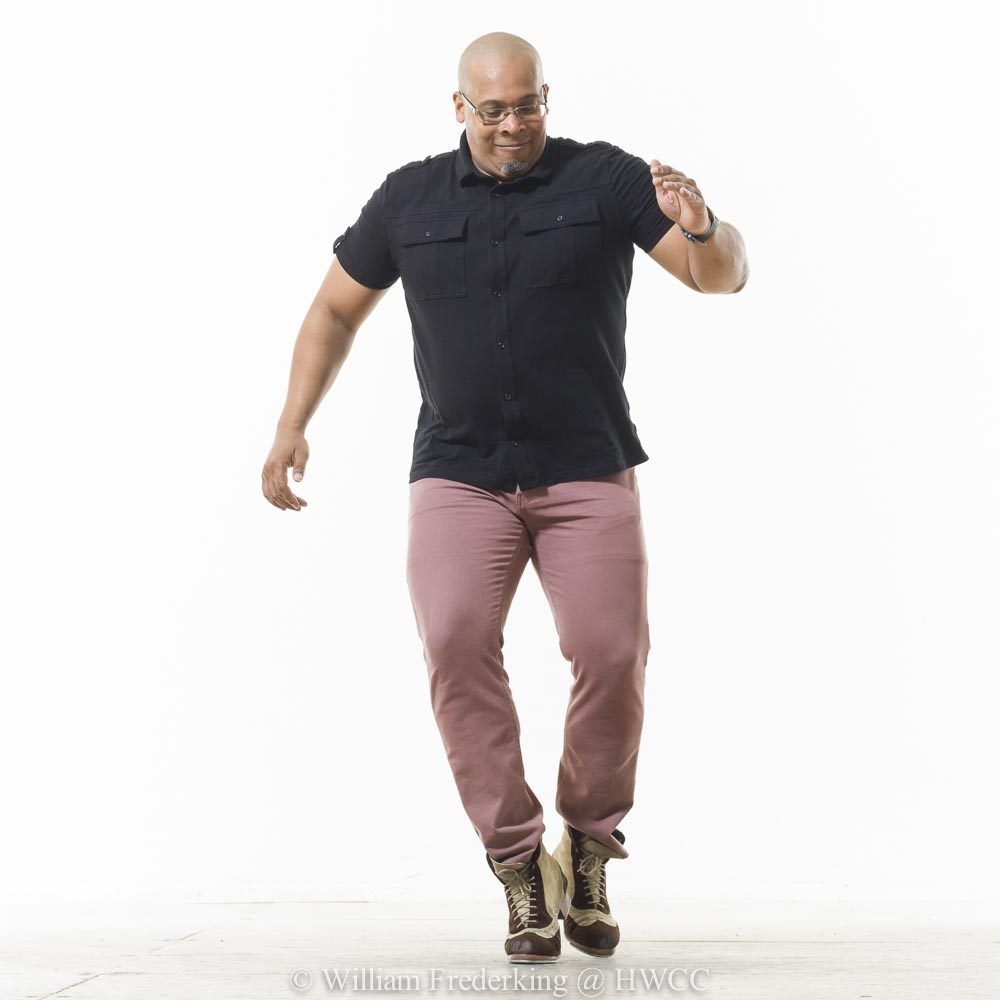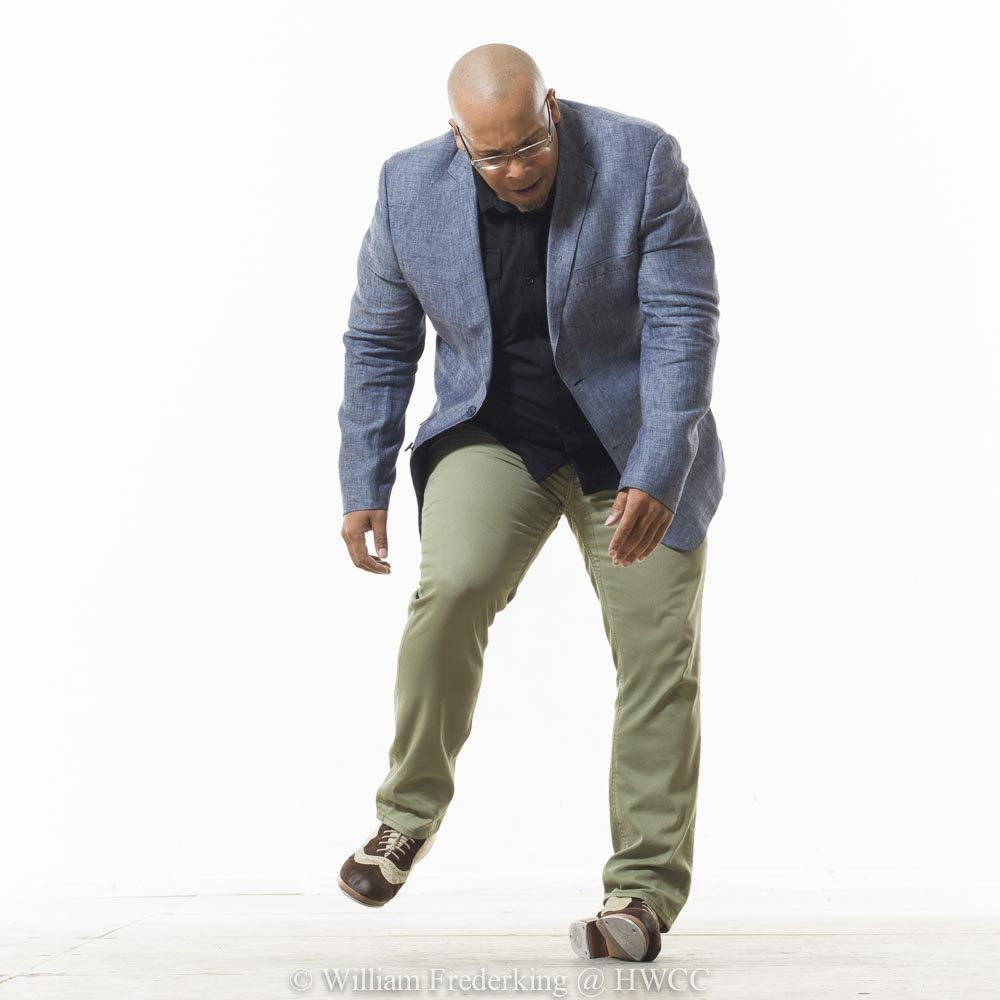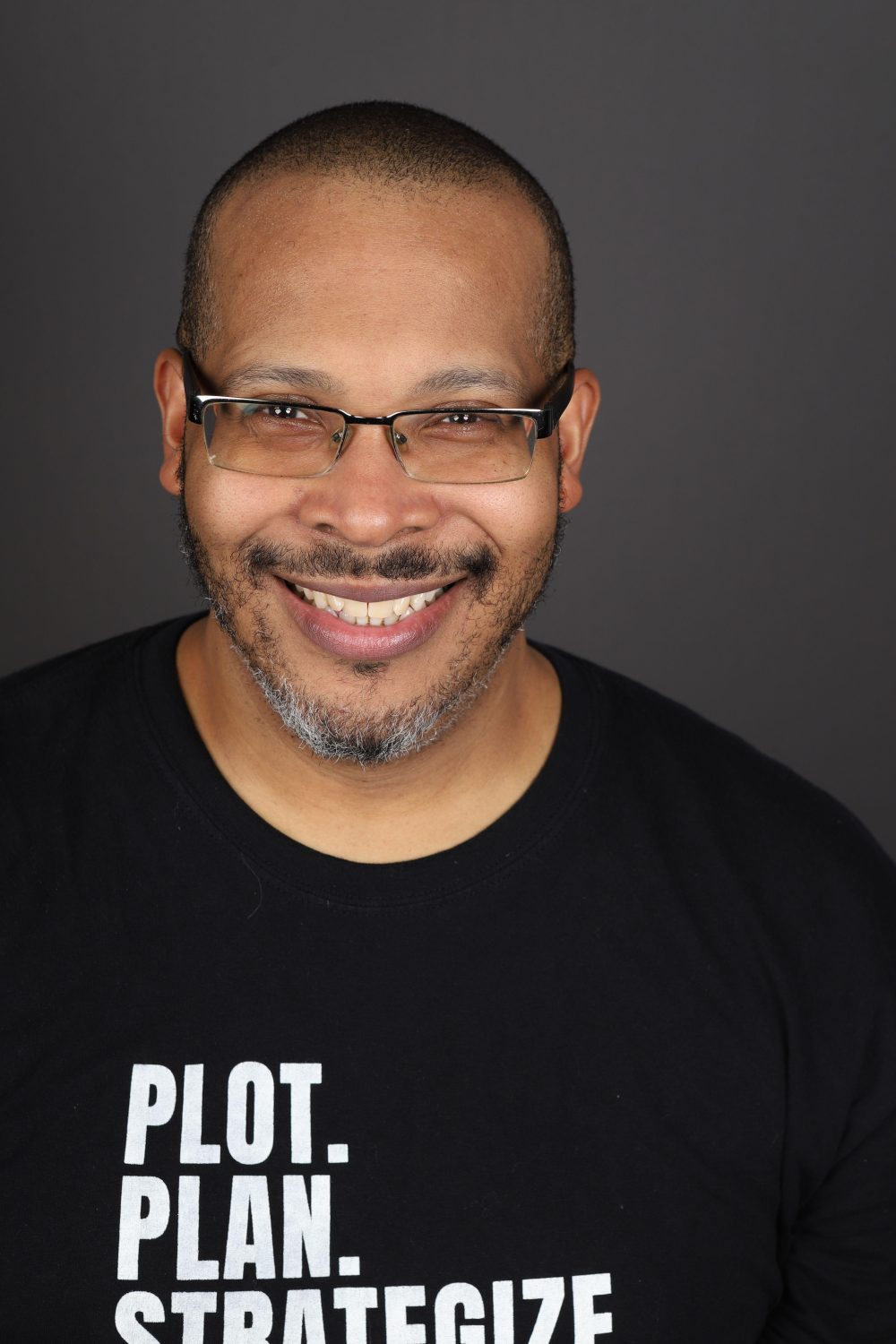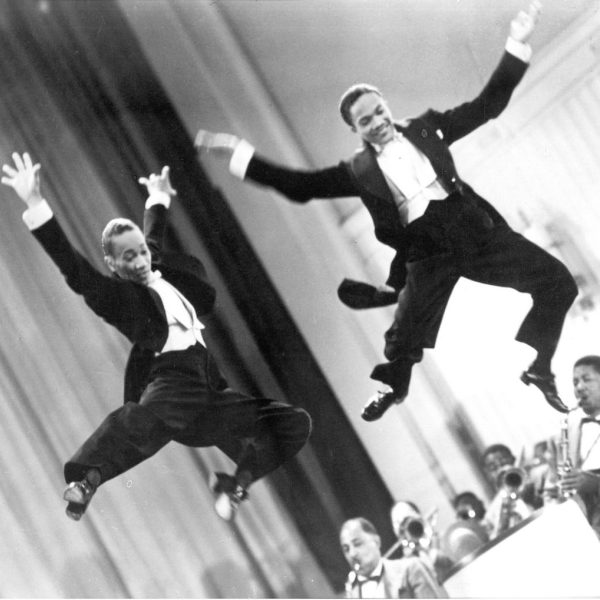
After a deep dive into the history of tap dancing and looking at the tops of the field, we wanted to get a view from where the metal first hits the floor: Tap on a neighborhood level. Bril Barrett is the co-founder and director of Chicago's MADD Rhythms, a South Side tap center that loves tap as an artform and also sees its potential for young people. Afropop's Ben Richmond reached out to learn about the MADD Rhythms mission and how Barrett teaches this artform that he says is almost as analytic as it is creative--keeping in mind that it's also always fun.
The interview was edited for clarity and length.
Afropop Worldwide's Ben Richmond: First off, why don't you introduce yourself to Afropop's readers. Who are you and what is it you do?
Bril Barrett: My name is Bril Barrett and I am the founder and director of MADD Rhythms, which stands for "Making A Difference Dancing Rhythms." We are a tap dance organization based here in Chicago, and we just celebrated our 20th anniversary. Part of our mission statement is to preserve, promote and contribute to this art form called tap. We focus on teaching its history, its culture and advocate for its future. And we use this beautiful dance/music form in the underserved communities of this world by connecting and caring for the youth of this world. We believe that having access and options give a child a greater chance at a positive life. Therefore we work on spreading the joy, love and discipline—and expression— of tap to as many humans as we can.
How do you get into tap? I'm assuming you're a dancer.
Yeah, I am a born and raised tap dancer. Let me take you back a little bit. My grandmother always wanted to be in entertainment but her life did not lead her down that path. So once she had a family, she wanted to put her family in music classes and in dance classes, acting classes, in hopes that they would get bitten by the entertainment bug. They did not, so when her children had us, her grandchildren, that they put us in dance class, acting class, music classes. That's the familial connection. But when I was younger we weren't always the most financially stable. A lot of kids in the neighborhood we grew up in, an under-resourced, under-served community, used to hang out and hanging out meant trouble, so my grandmother and my mom and my aunts and uncles made sure that all the young people had somewhere to go. There was a community center in Chicago called the Better Boys Foundation that I grew up going to. It's where I got turned on to the theater. When the other kids were going over to sports, I was going to the theater to learn all the different dances. The more and more I studied, oh, the more and more tap became prominent in my life. And I started to let other things go, and I was left as an adult just loving tap dance.
Do you remember what it was about tap that appealed to you?
I have a natural connection to it, but my first teacher was named Carlton Smith and the first song we ever tap danced to was "Sir Duke" by Stevie Wonder. The song was already familiar because when I was growing up my mom was a Stevie Wonder fanatic. So I was always listening to Stevie Wonder as a kid even if it wasn't my choice and I didn't know what it was. But I did know it was funky. And I did know I enjoyed it. So I get to tap class and the first thing we're learning is Stevie Wonder. Oh, it was like, "Oh this is home for me!" In those classes I was doing all choreography and Mr. Smith had a really heavy hitting style so it worked for me. When I got older, 11 or 12, there was a college station in Chicago called KKC that used to play rap for one hour every Friday night and Saturday night. And I used to tap to that music I was listening to and unbeknownst to me I was: One, starting to mess around with improvisation, but Two, it naturally connected to hip-hop for me. And that's what really connected my love of the dance. The music of the time and the music of my household really connected me to tap in a very organic way.
That's interesting. Going through tap's history chronologically for this show, for a while tap loses its connection to the music of the day, what people were listening to. But you came into it right away connecting to what you were listening to and partying to.
The funny thing is tap has this connection to jazz but I didn't know about that connection until I fell in love with it, which made me want to learn more about jazz. That's kind of where my journey started. I was going to school and I met a guy who is a tap dancer, a street performer. His name was Mr. Taps. He was tap dancing in the subways of Chicago. I would get off the train going to school, and as I mentioned earlier our family wasn't well off at all. But this guy was street performing; he was tap dancing and making money. And I was like "Oooh! Maybe I could do that." Luckily I was never a shy kid, so I said "Hey, I tap dance too. Can I tap dance with you so I can make some money?" But Mr. Taps he only danced to jazz—matter of fact he only danced to big band music. Duke Ellington, Count Basie that was his wheelhouse.
When I was dancing with him funny things happened. One, I didn't have to adjust. The stuff I was doing to hip-hop and Stevie Wonder up to that point naturally fit to the jazz that he was playing. And Two, because I never really dealt with improv, I would just go out and do pieces of the routines I learned over the years at the dance school and the community center with my first teacher. But sometimes I would forget part of the choreography and just make something up until I could remember and then I would go back into the choreography. The more I would dance with him, the more the part I made up would take over. And that's where my love affair with tap really took a strong turn. Because then I was like "Oh, I'm making the music." That opened up a whole other world.
Was Mr. Taps improvising?
Yes he was, but in the beginning he never told me that. I just thought the dude had a lot of routines. Again I had four or five routines that I had learned so I just assumed that, as an adult, he must have had that many more routines for every year of dance school he was in. I had no idea. As I kept dancing with him, my mom wanted to meet him, you know a kid hanging out with a grown up, gotta meet the parents. Mr. Taps had a nephew he was teaching to tap and some students and then I had cousins who tapped with me at the community center and dance school and he invited us all to his house for a pizza night. So we all went over, and pizza night was also "footage night," when we sat down and watched old video tapes--and I do mean video tapes. The Nicholas Brothers, the Four Step Brothers, this was my first time seeing the old tap dance. Mr. Taps literally introduced me to jazz in connection with tap, and then started introducing me to the history of tap via the early legends and hoofers of the dance. I was all in after that. Man, that changed my whole life.
Finding a tutor tapping on the street, one who's willing to teach the history, getting that apprenticeship is out of a movie or of 50, 70 years ago!
I agree with you—which is why someday my story is going to be a movie—but also that's what a lot of today's generation don't have. They don't have mentors. Kids get on YouTube or whatever and they're out there in the world, and they're learning from the world without anyone breaking down what these things mean, so that's why to this day my organization is heavy on mentorship, heavy on history, heavy on culture.
As I was going through the history, dancers mentioned seeing Gregory Hines or Savion Glover later bringing in "da funk," and hip-hop.

Yeah, I mean, tap was something I was going through and connected to through people I knew, but for me it really didn't have a life outside of that. I didn't see it on TV--my teacher introduced me to footage and I started watching stuff from the '30s and '40s and then at some point one of the TV stations ran a Fred Astaire marathon and that was the first time I ever saw tap on TV. So I watched every movie on this Fred Astaire marathon, but what's interesting to me is that I liked that Fred Astaire was this smooth guy. He was the guy who got the girl in the movies; he was always dressed to the nines, he was sharp. As a tap dancer he was a really cool dude. But I noticed that I never wanted to tap like Fred Astaire. The way he tapped didn't really connect with me. Looking at him after seeing the Nicholas Brothers and the Four Step Brothers and Bojangles it just wasn't as exciting. I already knew where my connection to the dance lived, even before I saw Fred Astaire. When Gregory Hines came out as a tap dancer, he was most famous outside the tap world but in the tap world he was a megastar. When he came out in dress slacks and tank top with an earring and a short fro, he was really cool. And the way he danced impressed me. And then of course Savion came out and now he was the first famous tap dancer who dressed like me. Gregory Hines was a Black man so I identified with that aspect but then here comes Savion Glover and he's wearing baggy jeans and Timberlands and got a baseball cap on backwards and I immediately identified because that's how I was dressing at the time. It was like "I can be me and be a tap dancer!" Those were all crucial moments in my life.
It's cool that you first connected via Stevie Wonder. I think a lot of people, the first thing they see is Fred Astaire and then they have to discover the rich, Black history behind it. You knew right away where tap belonged.
I always say, I always knew I wanted to tap dance from the first time I put on tap shoes, but I didn't know what that meant. What kind of career that could be. I knew that I wanted to keep tap dancing.
When students come in now do they come in with some tap knowledge? Do they know where they want to go?
No, you know, at one point people were talking about tap like it was dead. Tap has never died. It just wasn't the popular art form like it was in the heyday of Hollywood. Usually when students come to our after-school program they have no knowledge of tap. So we try to educate them from the beginning to where we are now. If they come into the dance school they might have a little knowledge but they don't really know where they can take it. My dance school, we start improvisation right from the beginning and these kids today--wow! I couldn't have imagined all that they are doing with tap, because the way we have exposed them to it makes it theirs from the beginning.
Can you walk me through the science of making someone fall in love with tap? You have a routine?
Well I love tap and I have fun, so my classes show that. So that's the first thing. If you've ever seen a ballet class in a movie, it's so serious--no talking, no laughing. And tap it's the opposite. You make mistakes and we applaud. You fall down, we clap and go crazy like you're a superstar. So that encourages especially little kids to try even more craziness. You want to see the craziest app you've ever seen? Watch a five-year-old who doesn't think anything they do can be considered wrong. They will blow your mind. That's the first part--just transferring the love I have to them as I teach. But second, I think about tap as a language. We don't teach all the words and then say go try to use it. I think about a baby who starts with one word --mama-- or no, these babies communicate fully with one word. It can mean everything. And then they expand their vocabulary and add words. And that's how I think of tap. Students are encouraged to create and make it their own, even when they only have one step. I like to tell stories, I think everyone likes a good story. So I show them videos of Mr. Tap, and tell them about my upbringing, and then show them videos of the Nicholas Brothers leaping down a giant staircase in Stormy Weather. You should see these kids trying to jump over each others heads!
You mentioned having a heavy hit and I've heard Savion Glover say the same thing. Can you explain what that is?
You know everything in tap connects with the history. A lot of people think of tap is just what they would see on Broadway and from Hollywood. But tap existed before that, Hollywood just simplified it and whitewashed it. So they brought it up on their toes and everything was pretty and everyone's arms moved in unison. On Broadway and in movies, smile on the face and the carriage of the upper body is just as important as the rhythm of the feet. But when I say I want to be a heavy hitter, I think about making music with my feet. Our feet are drums. Especially if you connect it back to the African drum, oh, you have to be able to hit the heavy and the light stuff in order to make complete rhythms complete music and phrasing. The heavy hitters are people like John Bubbles. Baby Laurence was a heavy hitter. Traditional tap dance is the hoofers-- the heavy hitters, the legends of this art form. But a lot of that has been lost or people just don't know about it.
Do you ever have students who just think that tap isn't for them?
Not that tap isn't for them, but one thing we stress is that it's O.K. to have to relearn some things. If someone is coming from another dance school, We tell them tap is tap and if you learn to shuffle somewhere it's going to be the same here but a might be a slightly different approach. Or someone comes from a different dance tradition like ballet, they might have to relearn some things. We have two little girls right now who have a dance background, who were taught that the ballet toes out is the basic stance for all dance. That's something else we have to teach. Ballet is not the root of all dance, or the only dance art form. This is what they teach in ballet. We have to re-educate feet and we have to teach people that a lot of what they've been told is just wrong. Some ballet will teach dancers not to do tap because it will mess up their ankles. I tell the students, "just understand that ballet is a different technique. When you come here you have to learn an entire new technique."
It's a little rich that ballet would warn people about what tap does to their lower extremities, given what ballet can do to your toes.
I always say the ballet is this art form caught up in the "white superiority complex" because I could never imagine a million years telling any of my students, "don't you dare do that art form because this one is more important." I could never imagine doing that. The idea the one art form would say "don't do another art form because the skills there don't serve our art form," is just a problem with the dance world and why tap is always fighting, and why people are always reshaping it. Fred Astaire and Gene Kelly weren't the greatest tap dancers but they were great dancers. Their carriage and the way they move made their dancing more identifiable for people who appreciate ballet, and those people will dismiss the hoofers and the legends--the people who created this art form--as just hunched over or having no technique. It's judging based off what they deem important and not what the world has produced. And that's a problem.

The first times I really enjoyed tap was watching Singing in the Rain as a kid, and I was surprised as I researched for this show finding that, as a tap dancer, Gene Kelly is pretty limited, even as he does great stuff for dance on film. But you watch him with the Nicholas Brothers...
There's so many different styles of tap, and the Nicholas Brothers were what was called flash dancers. When Hollywood looks to Black dancers, that's what they were looking for. We may never know if Fred Astaire could do a flip because he was never asked.
I guess the reverse is also true and that we would never know how good the Nicholas Brothers would be as romantic leads because they were never given that chance.
That's actually not true, at least of the Nicholas Brothers because Hollywood fell so in love with them. Harold Nicholas did a movie called Down Argentine Way where he was the main character and was a leading romantic man. That was because he also knew how to speak several languages so he didn't have to fake-learn for the movie, oh, he actually spoke Portuguese and Spanish and French. Harold Nicholas spoke nine languages fluently. A lot of people don't even know that about them.
Let's say a parent comes to you and is thinking about enrolling their kid in tap, but they want to know what learning tap will do for their kid? What do you say?
Right off the bat I tell them, tap offers musicality in phrasing, recognition of patterns. The funny thing is tap makes you better at math. Learning tap is also basic music theory. You're letting the discipline of doing something on both feet. There's so much. That makes students more balanced in all other areas of their lives, that reaches far beyond the world of tap. Being next to someone in that tap performance, you're learning spatial reasoning. You're learning soft skills, you're learning hard skills. I like to say tap is one of the few art forms that is almost as analytical as it is creative. You're learning to compose music even as you learn to tap dance.
Related Audio Programs

Related Articles









